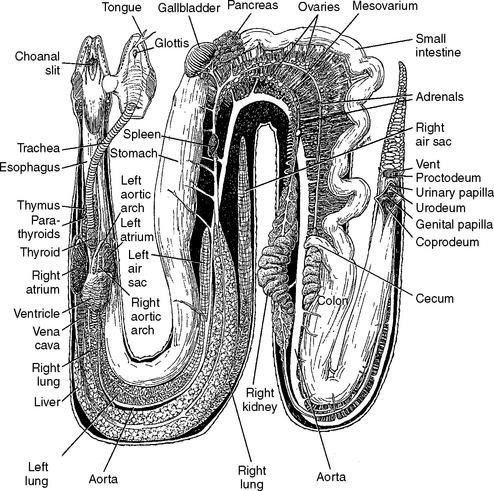Chapter 37 Overview of Reptiles as Pets
Like birds, reptiles hold a special place in the hearts of many pet owners. They are different from a dog and cat, they require little space, and they are quiet. Many reptiles make very good pets if properly maintained; however, as with birds, many owners purchase reptiles without knowledge of their needs. This results in the needless death of many of these pets. Many different species of reptiles exist and a discussion of all of them is beyond the scope of this book. The technician is referred to several good texts on reptile medicine for detailed information. In this section, we will cover the general husbandry requirements and specific diseases for the most common reptiles kept as pets.
OBTAINING A NEW REPTILE
Most reptiles are purchased from pet stores or private breeders. All new reptiles should be quarantined for a minimum of 60 to 90 days to prevent introduction of disease into the collection. During this period, the animals should be given a complete physical examination, including performing diagnostic laboratory testing to rule out disease, parasites, or nutritional problems. The quarantined animal should be housed in a separate area of the house; should be fed, cleaned, and handled last; and should have no exposure to animals already in the collection until it is proved free of disease. New animals should be housed separately because many reptiles are carnivores and may eat cage mates when stressed.
DIET
In general, all snakes are carnivores. They will eat pinky mice, adult rodents, chickens, ducks, and rabbits (depending on the size of the snake). Some lizards are also carnivores and require insects or small rodents for food, whereas others are herbivores and have little requirement for protein (meat). Many reptiles will not feed unless the prey is presented alive; others prefer killed prey. Adult snakes generally eat one to three times per month, whereas iguanas and other lizards eat daily. It is important for the owner to know the requirements for the species being kept as a pet. Handling snakes after feeding can result in regurgitation of the entire meal and, eventually, loss of condition. All food sources should be fresh and clean. If frozen, they should be allowed to thaw in the refrigerator rather than in the microwave. Powdered vitamins can be hidden in or dusted on the food if desired.
REPTILE ZOONOSES
Although not truly a zoonotic problem, venomous reptiles represent a threat to humans. The majority of owners should NEVER keep venomous reptiles as pets. Venomous reptiles present a danger to both the owner and those living in the surrounding environment. Even highly trained persons have been seriously injured handling venomous reptiles.
SNAKES
Anatomy
The anatomy of the snake is unique because everything is linear in design (Fig. 37-1). Snakes have a three-chambered heart whose position is somewhat variable in that it is movable within the rib cage to allow for passage of large food items. Snakes have both renal and hepatic portal circulatory systems. They have an abdominal vein that runs along the ventral midline. Snakes have two lungs, but the left one is usually smaller than the right. The trachea opens on the midline of the tongue as in the bird. The digestive system is linear from the oral cavity to the cloaca. Six rows of teeth are generally present and are replaced throughout the life of the reptile. Paired kidneys are located in the dorsal caudal abdomen. They are lobulated and elongated, and the ureters empty into the cloaca. Like birds, snakes pass urates with their feces. All male snakes have two intermittent organs (hemipenes), which lie in invaginated pouches on the ventral surface at the base of the tail. The depth of these pouches is used in sexing snakes; the deeper pouches are found in male snakes, the more shallow ones in female snakes.
Stay updated, free articles. Join our Telegram channel

Full access? Get Clinical Tree



